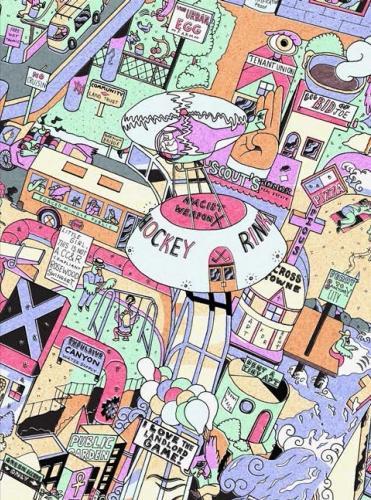
The Arsenal of Exclusion & Inclusion: 101 Things That Open and Close the City
(, English)
Publishing Details
The Arsenal of Exclusion & Inclusion: 101 Things That Open and Close the City
By (Author) Georgeen Interboro Partners
By (author) Theodore
By (author) D'Oca
By (author) Armborst
Actar Publishers
Actar Publishers
21st February 2018
English
United States
Classifications
General
Non Fiction
711
Physical Properties
288
Width 165mm, Height 235mm
Description
The Arsenal of Exclusion / Inclusion is a book about 101 "weapons" that architects, planners, policy-makers, developers, real estate brokers, community activists and other urban agents use to restrict or promote access to the space of the city. The Arsenal includes minor, seemingly benign things like "NO LOITERING" SIGNS and BOUNCERS, but also big, headline-grabbing entities like GATED COMMUNITIES and EMINENT DOMAIN. It includes policies like INCLUSIONARY ZONING and RENT CONTROL, but also physical things like BOMBS and those ARMRESTS that they put on park benches to make sure homeless people don't get too comfortable. Some of the entries in the Arsenal--like HALLOWEEN, FAMOUS PEOPLES' HOUSES, and JURY DUTY--are probably things you didn't know had anything to do with cities at all, let alone this war for what Henri Lefebvre called the "right to the city." With contributions from over fifty of the best minds in architecture, such as Julie Behrens, Bill Bishop, Lisa Brawley, Ava Bromberg, Marshall Brown, Common Room, Charles Connerly, Nathan Connolly, Margaret Crawford, Alexander D'Hooghe, Elizabeth Evitts Dickenson, David Freund, Gerald Frug, Vincent James, Jeffrey Johnson, Michael Kubo, Kaja Kuhl, Matthew Lassiter, Amy Lavine, Setha Low, Thomas Oles, Michael Piper, Wendy Plotkin, Jenny Polak, Albert Pope, Mathan Ratinam, Brian Ripel, James Rojas, Theresa Schwarz, Roger Sherman, Susan Sloan, Lior Strahilevitz, Meredith TenHoor, William TenHoor, Thumb Projects (Graphic Design), Stephen Walker and Jennifer Yoos, among others.
Reviews
""The Arsenal" goes ... broader, addressing private, public and shared spaces. A series of essays by Interboro and in-the-trenches contributors show that the ways we plan and design our built environment, and allow (or forbid) access to it, have a serious impact on everything from economic mobility to public health." --Allison Arieff, The New York Times
